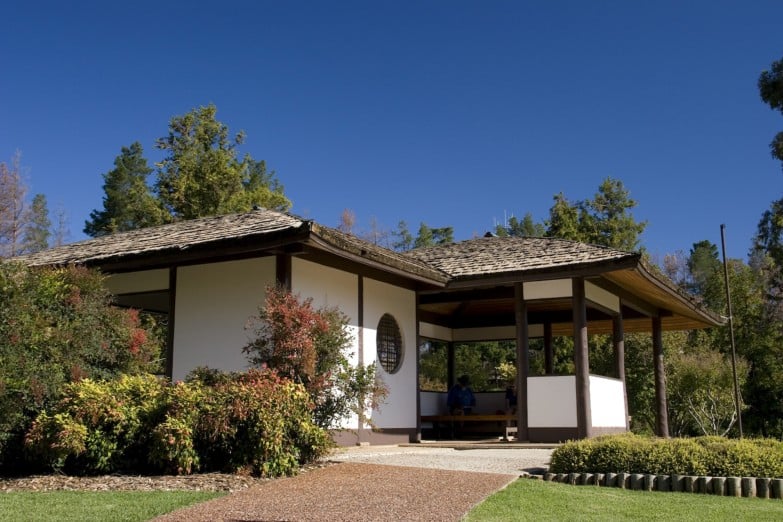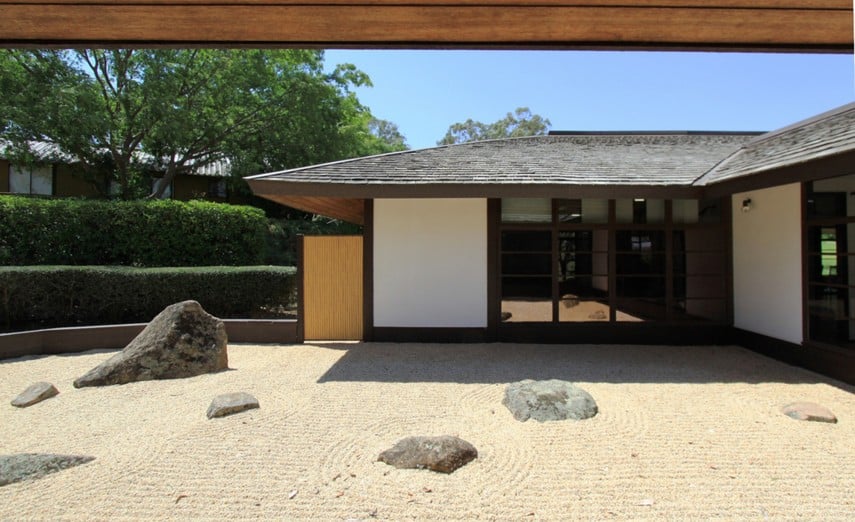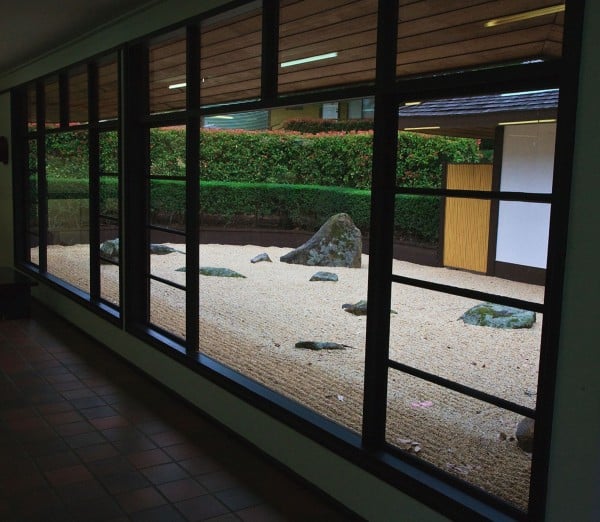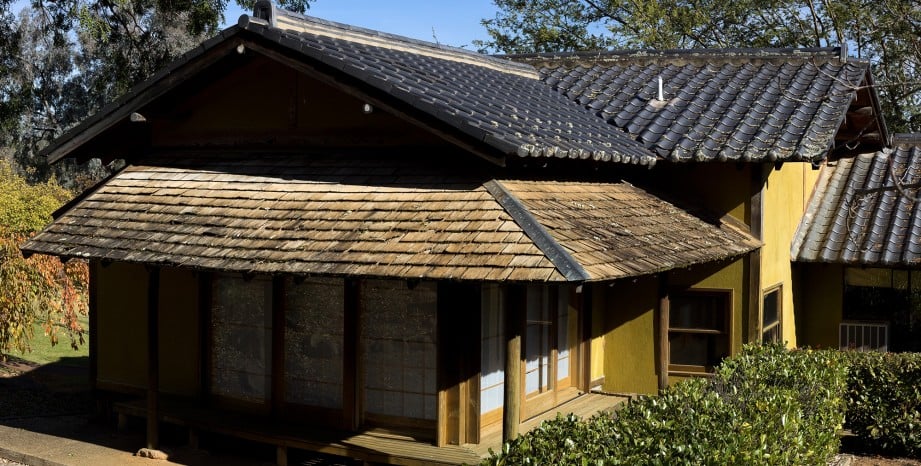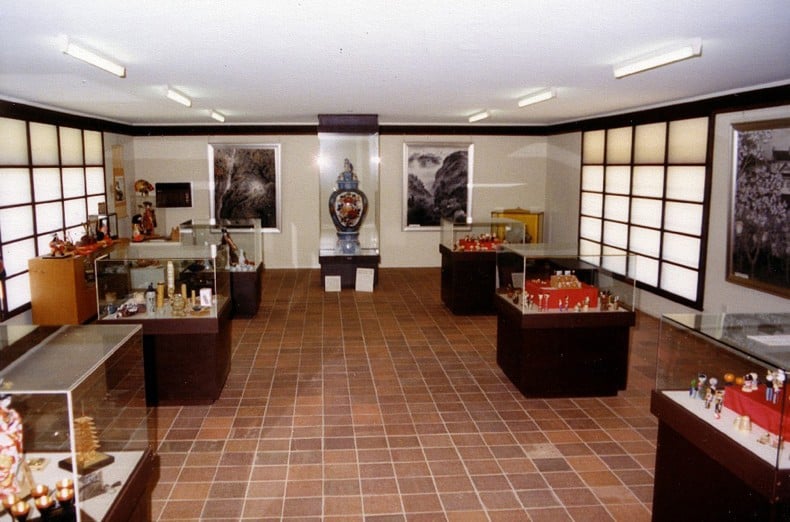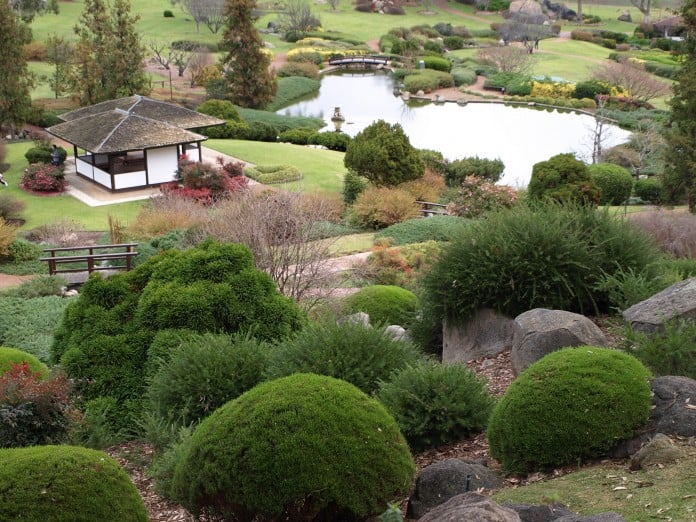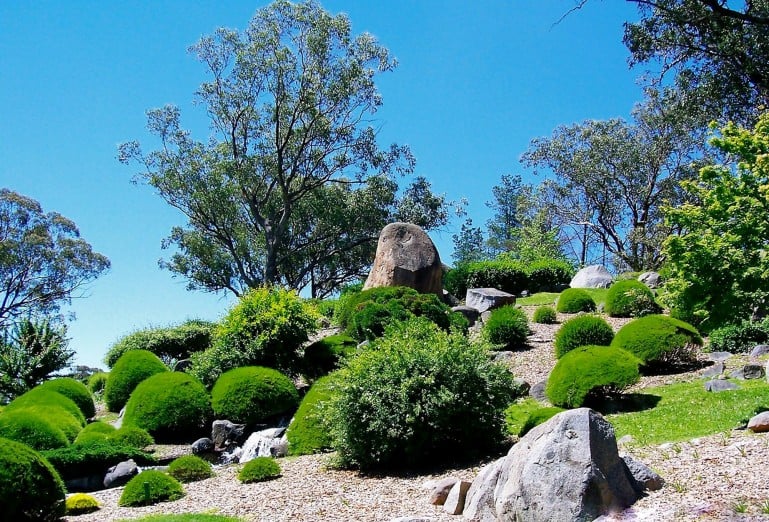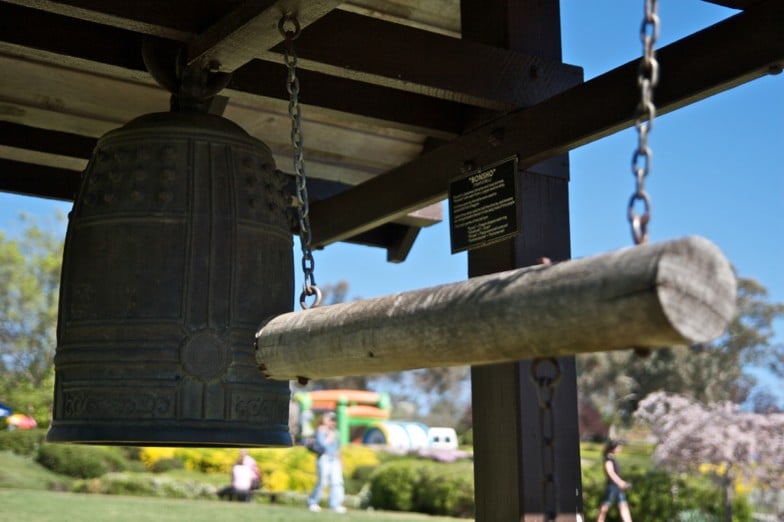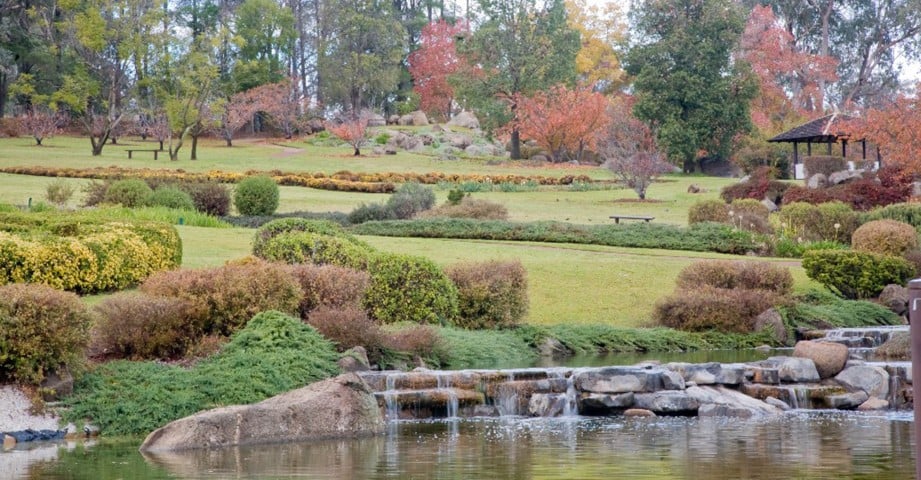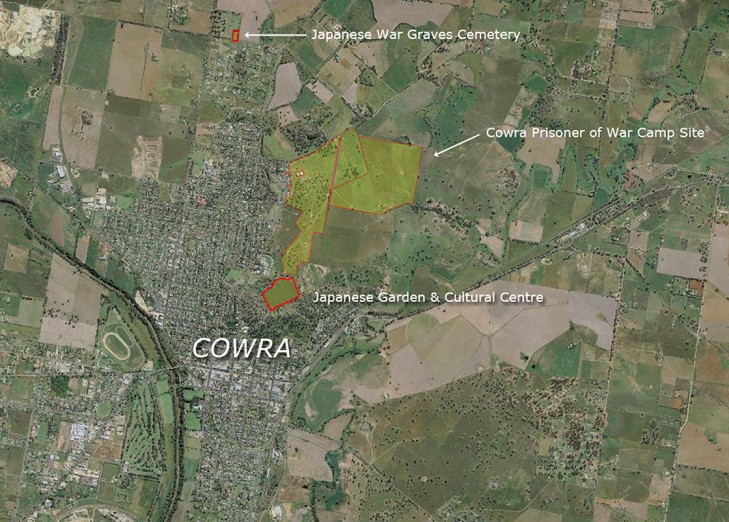The Cowra Japanese Garden and Cultural Centre was listed on the National Trust Register in June, 2013.
The Cowra Japanese Garden at Binni Creek Road, designed in 1977 and opened in 1979 is an authentic Japanese Garden, the largest in the Southern Hemisphere. It was designed by renowned Japanese Garden Designer Ken Nakajima (1914-2000) who also designed the Montreal Botanical Garden (1988), the Moscow Botanical Garden (1983-1987), the Japanese Garden, Hermann Park, Houston (1992) and the San Diego Japanese Friendship Garden (1985). The Cowra Gardens are the earliest of these five major Japanese Gardens by Nakajima.
The Japanese Garden and Cultural Centre has historic significance as it was established to recognize and develop the relationship between the people of Cowra Shire and the people of Japan, a relationship that has its origins in the Prisoner of War Camp that housed the Japanese P.O.W.’s during World War II and the decision in 1960 by the Japanese Government to bring all their war dead from other parts of Australia to be re-buried at Cowra. The Garden is located on the site of the World War Two Japanese prisoner of war camp and the site of the infamous Cowra break out in 1944 – a story of great courage, spirit and futility.
The Japanese buildings throughout the garden were designed by world renowned Japanese architects Takeo Adachi and Tatsushi Aono.
The Garden has high aesthetic significance displaying what is intended to be the range of Japanese landscapes in miniature and hosting temporary exhibitions of major artworks such as Suton Stone by eminent sculptor Takehiro Terada.
The Japanese Garden and Cultural Centre has social and spiritual significance for the relatives and descendants of the Japanese prisoner of war camp and for Japanese vistitors generally. The garden was built to commemorate the Japanese prisoners of war who died at the Cowra breakout. Ken Nakajima, the designer of the garden could see the Avenue of Cherry Trees as a symbolic avenue, lighting the way for the spirits of the dead Japanese from the cemetery to live in peace in the garden.

